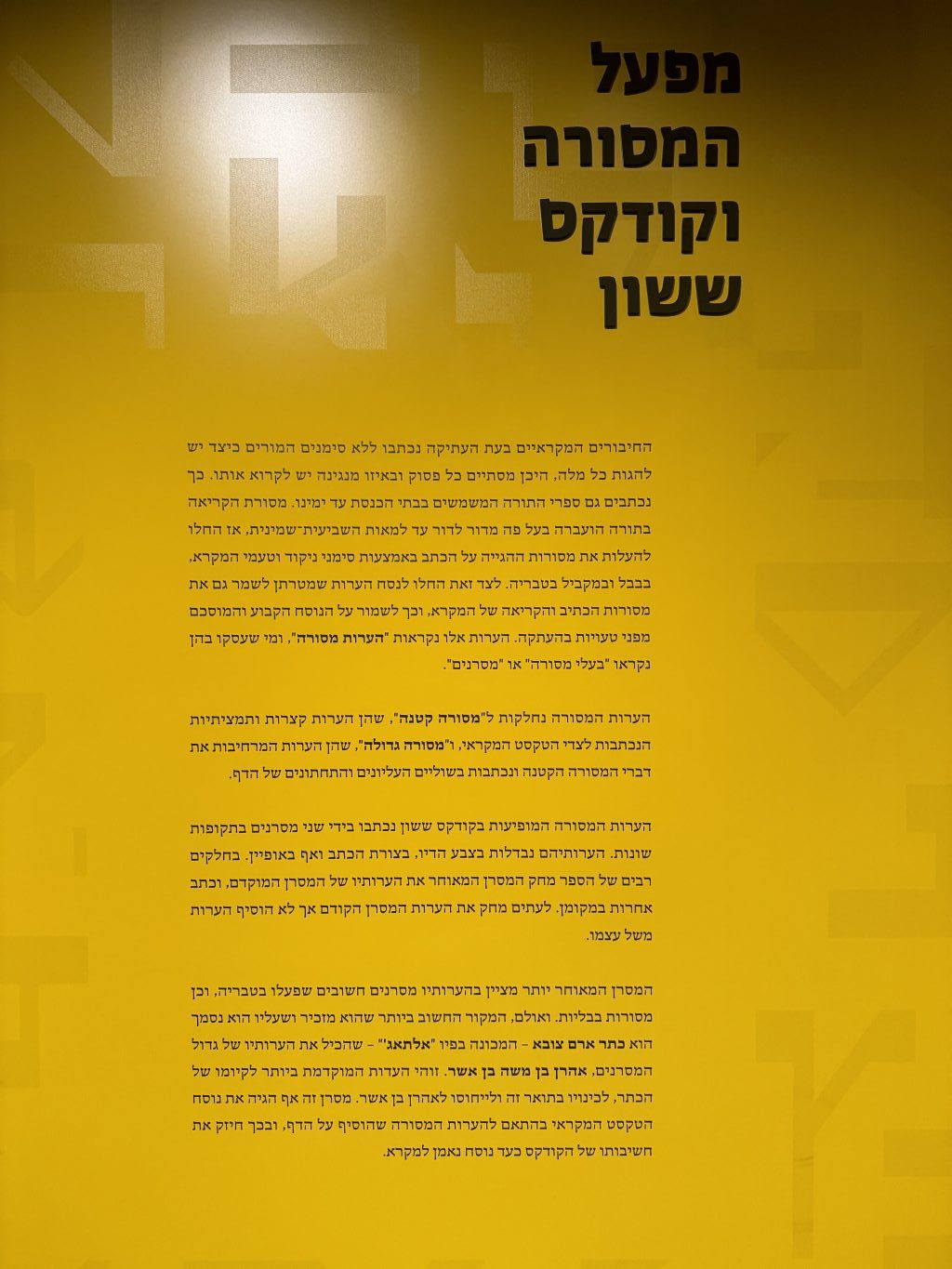Text Panel
The Masoretic Project and Codex Sassoon
In antiquity, books of Scripture were written without any marks to indicate how to
pronounce each word, where each verse ends, and how to chant the words. This is how the
Torah scrolls used in synagogues are written to this day. The tradition of how to read the
Torah was transmitted orally, from generation to generation, until the 7 th –8 th centuries,
when groups of scribe-scholars in Babylonia and Tiberias began to commit these traditions
to writing using vocalization and cantillation marks. They also began composing notes with
the goal of preserving the tradition of how to write and read Scripture, thus safeguarding
the fixed, accepted text from copyist errors. These notes are called ‘Masoretic notes’, and
the scribe-scholars who wrote them are called ‘Masoretes’ or ‘Ba’alei Ha-Masorah’.
The Masoretic notes can be divided into the ‘Masorah parva’ or ‘Masorah ketanah’, which
are succinct and written alongside the Tanakh text, and the ‘Masorah magna’ or ‘Masorah
gedolah’, which elaborate the terse notations of the Masorah ketanah and are written in
the upper and lower margins of the page.
The Masoretic notes in Codex Sassoon were written by two different Masoretes from
different times. Their notes are distinguishable by the color of ink, handwriting, and the
nature of their contents. In many places, the later Masorete erased the notes of the earlier
Masorete and replaced them with his own notes. Sometimes he deleted the notes of the
earlier Masorete but did not add his own notes.
In his notes, the second Masorete mentions important Masoretes who were active in
Tiberias alongside Babylonian traditions. But the most important source that he mentions,
and on which he relies, is the Aleppo Codex – which he calls ‘al-taj’(‘the crown’) – which
contains the notes of the greatest of the Masoretes, Aharon ben Moshe ben Asher. These
notes constitute the earliest attestation to the existence of the Aleppo Codex, to its being
called ‘al-taj’, and to its attribution to Aharon ben Asher.
The second Masorete even corrected the Scriptural text to make it conform to Masoretic
notes that he added on the page, thus bolstering the codex’s importance as a reliable
witness to the Scriptural text.

